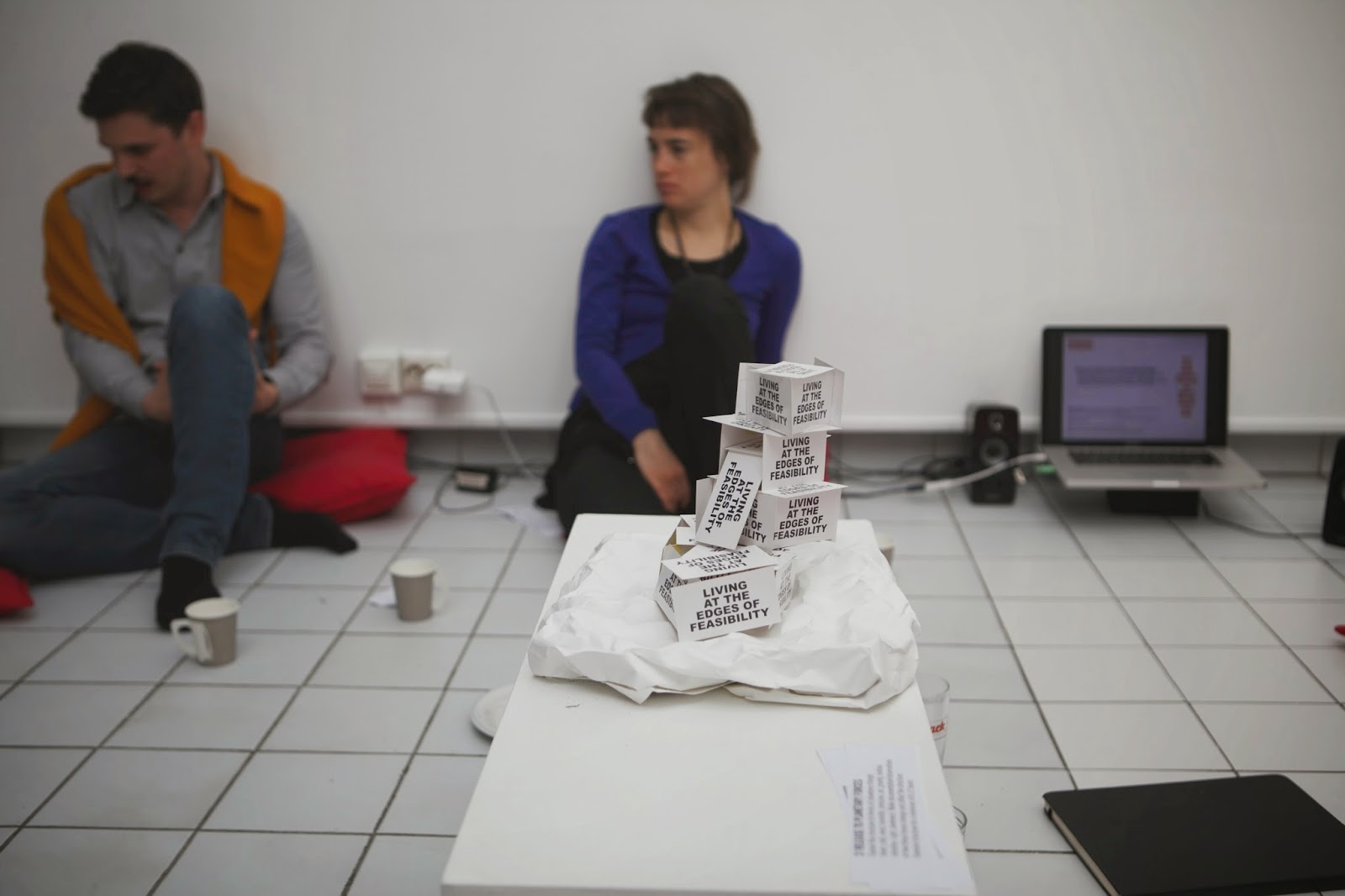The installation Merciful Owls is composed of
embroidery, tape, soil drawings, tarpaulin and terracotta sculptures. Different elements
represent a memory, reflection and understanding of a NATO military
intervention on Yugoslavia in 1999.
During the NATO aggression, I was 16 years old. This work shows my reflection on this violent
action performed on civilians, schools, libraries, hospitals, and historic and
architectural monuments.
There are speculations and to some extent proof
that harmful substances were components in the bombs causing severe
consequences on people, nature, animals, agriculture and life in general.
Every year around 800 long-eared owls spend the winter
in the main square of my home town Kikinda in Serbia. There are thousands more in the neighboring
villages and cities. No one knows for sure why and where exactly they come
from. They spend the days in the trees just above people´s head, completely
unaffected of what´s happening on the ground.
In Serbian folklore the owls are the messenger of death.
Uranium Embrace
“Most
depleted uranium (DU) arises as a byproduct of the production of enriched
uranium for use in nuclear reactors and in the manufacture of nuclear weapons.
It is used in conventional munitions to enhance their penetrating capability.
As is known, the warheads of munitions used by NATO for bombing Yugoslavia in
1999 contained depleted uranium. The use of DU in combat has collateral damage
– chemical and radioactive contamination, the period of its long radioactive
half-life is 4.5 billion years. The main danger of human life and environment
comes from high-toxic aerosol or spallation frangible powder produced during
impact and combustion of depleted uranium munitions which can potentially
contaminate wide areas around the impact sites, leading to possible inhalation by
human beings. After forming microscopic and submicroscopic insoluble uranium
oxide particles on the battlefield, they remain suspended in air and travel
around the earth as a radioactive component of atmospheric dust, contaminating
humans, animals and environment. It is widely accepted that uranium, inhaled as
insoluble particles, is carcinogenic to the lung through its radioactive
emissions and that if soluble will cross the blood /air barrier of the lung to
become systemic and be physiologically toxic to the kidney. It also leads to
chromosomal abnormalities. A latent period may be measured by many years. The
radioactive toxic agents are assimilated in the roots of plants and then get
into foodstuffs poisoning men and animals again. It’s almost impossible to
establish the origin of illness.
Thus,
nuclear weapons have been used against the Serbs. “Small”, low-yield tactical
nuclear warheads are produced by US Los Alamos laboratory. In Yugoslavia buster
bombs yielding the equivalent of 10 tons of TNT (trinitrotoluene) were used to
strike underground bunkers and oil reservoirs. Actually they were micro nuclear
munitions 10 times more powerful than the 2000-pound projectiles used in Iraq.
100-ton warheads were used to strike air defense systems. 1000-ton warheads
(small nuclear bombs) were used against ground targets. As a result of such
massive depleted uranium use the area of combat action and adjacent states
became a cancer and genetic disease risk zone.
Western
media, the United Nations World Health Organization and other international
bodies shy away from tackling the problem of depleted uranium used for military
purposes saying there is no objective evidence confirming its negative effect.
In particular, the 2001 World Health Organization’s report says, “Soils testing
for the presence of uranium does not seem to be necessary since it is
understood that others (public bodies and military agencies) have found little
or no radiation”, “Mass screening of the population is not recommended on the
basis of evidence found in the literature, deductions made by the mission team
and respected advice that was received. The mission is sensitive to the strong
beliefs held by some members of the public. If these beliefs continue to be
held, then a more limited testing regime could be considered based on a medical
referral by a local doctor. Issues related to testing options are being
considered separately by the Sustainable Development and Healthy Environments
Cluster (Executive Director: Ms. A.Kern) at the WHO Headquarters in Geneva”.
That’s all an authoritative international organization could say about the use
of weapons of mass destruction with consequences unknown. Going into the
details of the report one can come to conclusion the document lobbies the
interests of NATO and military industry passing over in silence ecological,
climatic and genetic aftermath of using munitions tipped with depleted uranium
warheads. But this data is available in Serbia.
Totally
NATO used 15 tons of depleted uranium to strike targets in Yugoslavia. It was
all converted into radioactive dust picked up by the wind and spread around the
Balkans contaminating soil, air, plants and animals. The dust is to last
forever, the radioactivity will reach its highest level after 100 years… The presence of
uranium has started to tell in full measure. In the period 2001 to 2010 the
number of people struck by carcinoma went up 20%, the cancer death toll
increased by 25% (first of all leukaemia and lymphoma, that make up for more
than 5% of malignant tumors in peacetime). Cancer will irreversibly go on
the rise. 40 thousand people are expected to be affected in Serbia in 2013 with
fatal outcome in 22-23 thousand cases. The figures exceed by three thousand the
number of fallen ill and by one-two thousand the number of fatal cases in
comparison with 2010.
The data
has been adduced by Dr. Slobodan Čikarić, academician, who heads the Belgrade
Oncological Clinic and Serbian Cancer Society. One can get introduced to it in
the sensational book written with co-authors called Crime in War – Genocide in
Peace and published in December 2012. According to him the depleted uranium
munitions used by NATO were the immediate cause of mass cancer spreading around
the country. Retired Serb General Petković says 44% of depleted uranium bombing
took place the last 10 days of the operation, that is after the seize fire
accord was concluded…”.
From Online Journal, Strategic Culture
Foundation:



































































